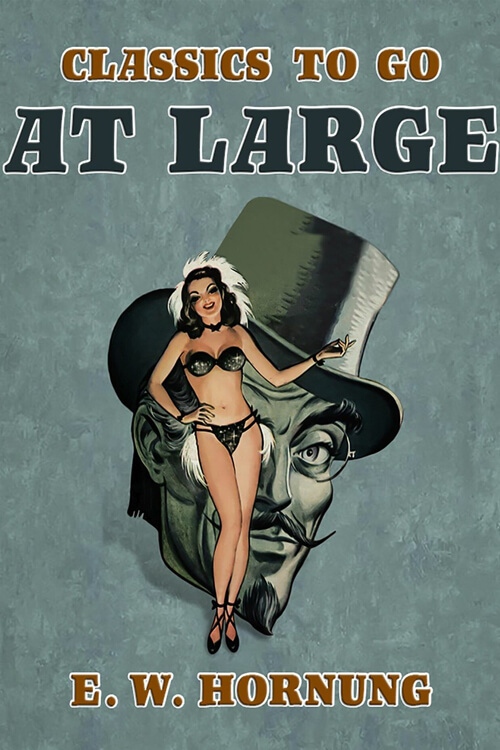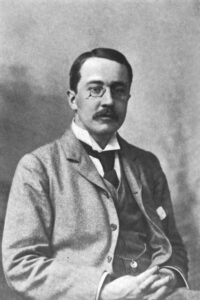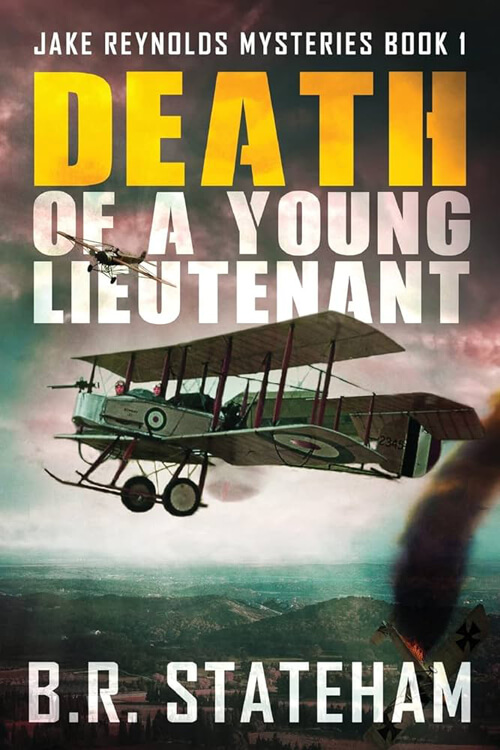
At Large
A HOODED wagon was creeping across a depressing desert in the middle of Australia; layers of boxes under the hood, and brass-handled, mahogany drawers below the boxes, revealed the licensed hawker of the bush. Now, the hawker out there is a very extensive development of his prototype here at home; he is Westbourne Grove on wheels, with the prices of Piccadilly, W. But these particular providers were neither so universal nor so exorbitant as the generality of their class. There were but two of them; they drove but two horses; and sat shoulder to shoulder on the box.
The afternoon was late; all day the horses had been crawling, for the track was unusually heavy. There had been recent rains; red mud clogged the wheels in every yard and clung to them in sticky tires. Little pools had formed all over the plain; and westward, on the off-side of the wagon, these pools caught the glow of the setting sun, and filled with flame. Far over the horses’ ears, a long low line of trees was visible; otherwise, the plain was unbroken; you might ride all day on these plains and descry no other horse nor man.
The pair upon the box were partners. Their names were Flint and Edmonstone. Flint was enjoying a senior partner’s prerogative, and lolling back wreathed in smoke. His thick bare arms were idly folded. He was a stout, brown, bearded man, who at thirty looked many years older; indolence, contentment, and goodwill were written upon his face.
The junior partner was driving, and taking some pains about it keeping clear of the deep ruts, and pushing the pace only where the track was good. He looked twenty years Flint’s junior, and was, in fact, just of age. He was strongly built and five feet ten, with honest gray eyes, fair hair, and an inelastic mouth.
Both of these men wore flannel shirts, buff cord trousers, and gray felt wideawakes; both were public men, drawn together in the first instance by that mutually surprising fact and for the rest as different as friends could be. Flint had been ten years in the Colonies, Edmonstone not quite ten weeks. Flint had tried everything, and failed; Edmonstone had everything before him and did not mean to fail.
Read or download Book
E. W. Hornung
Ernest William Hornung (7 June 1866 – 22 March 1921) was an English author and poet known for writing the A. J. Raffles’s series of stories about a gentleman thief in late 19th-century London. Hornung was educated at Uppingham School; as a result of poor health, he left the school in December 1883 to travel to Sydney, where he stayed for two years. He drew on his Australian experiences as a background when he began writing, initially short stories and later novels.
In 1898 he wrote “In the Chains of Crime”, which introduced Raffles and his sidekick, Bunny Manders; the characters were based partly on his friend Oscar Wilde and his lover, Lord Alfred Douglas, and also on the characters of Sherlock Holmes and Dr. Watson, created by his brother-in-law, Arthur Conan Doyle. The series of Raffles’ short stories were collected for sale in book form in 1899, and two further books of Raffles’s short stories followed, as well as a poorly received novel. Aside from his Raffles stories, Hornung was a prodigious writer of fiction, publishing numerous books from 1890, from A Bride from the Bush to his 1914 novel The Crime Doctor.
The First World War brought an end to Hornung’s fictional output. His son, Oscar, was killed at the Second Battle of Ypres in July 1915. Hornung joined the YMCA, initially in England, then in France, where he helped run a canteen and library. He published two collections of poetry during the war, and then, afterward, one further volume of verse and an account of his time spent in France, Notes of a Camp-Follower on the Western Front. Hornung’s fragile constitution was further weakened by the stress of his war work. To aid his recuperation, he and his wife visited the south of France in 1921. He fell ill from influenza on the journey and died on 22 March 1921, aged 54.
Although much of Hornung’s work has fallen into obscurity, his Raffles stories continued to be popular, and have formed numerous film and television adaptations. Hornung’s stories dealt with a wider range of themes than crime: he examined scientific and medical developments, guilt, class, and the unequal role played by women in society. Two threads that run through a sizeable proportion of his books are Australia and cricket; the latter was also a lifelong passion.
Biography
Hornung’s prose is widely admired for its lucid, simple style. Oliver Edwards, writing in The Times, considered that “not the least attractive part of the Raffles books is the simple, plain, unaffected language in which each one of them is written”. The obituarist in the same newspaper agrees, and thinks Hornung had “a power of good and clear description and a talent for mystery and surprise”. Colin Watson also considers the point, and observes that in Hornung’s writing, “superfluous description has been avoided and account of action is to the point”, while Doyle admired his “sudden use of the right adjective and the right phrase”, something the writer and journalist Jeremy Lewis sees as a “flamboyant, Kiplingesque taste for the vivid”.
Critics have observed that Hornung’s stories and novels are well-structured. George Orwell wrote that Hornung was “a very conscientious and on his level a very able writer. Anyone who cares for sheer efficiency must admire his work”. Watson states that Hornung’s “writing has pace. The stories, however ridiculous, carry the readers along briskly”. According to Cox, “Hornung’s work showed steady maturation” during his career, a point that Doyle also agreed with, although Edwards disagrees, and thinks The Crime Doctor to be one of Hornung’s weaker books.
Hornung’s approach to characters differed from other contemporary authors. Cox notes that Hornung “frequently chose to write from the perspective of the criminal”, and while many of Hornung’s novels contained criminal activity as a major element of the plot, the Critic for Contemporary Authors states that the works do not “belong to the crime-fiction genre”. Hornung’s works included elements from more general fiction, “such as false identities, disguises, and disowned heiresses”.
Major themes
The academic Nick Rance identifies three categories of Raffles’s stories: “the rise of the New Woman”, in which Raffles either escape from romantic entanglements or uses the infatuations of a woman to achieve his aims; “the rise of the Plutocracy”, in which Raffles steals from the nouveau riche as much as the upper classes; and those stories that seek “to reaffirm or re-establish a sense of middle-class identity”. The last category is based on Raffles not being a member of “Society”, only being accepted because of his cricketing ability and associated fame. From this point, Raffles’s stealing from the rich is a “rearguard action on behalf of the Puritan values” which was perceived as making up middle-class values, although Rance also states that those values are obscured because of the changing boundaries between the classes. Gariepy makes the same point, and considers that “Raffles’s daring exploits and fantastic adventures symbolized the growing rebellion against Victorian sensibility at the turn of the century”.






